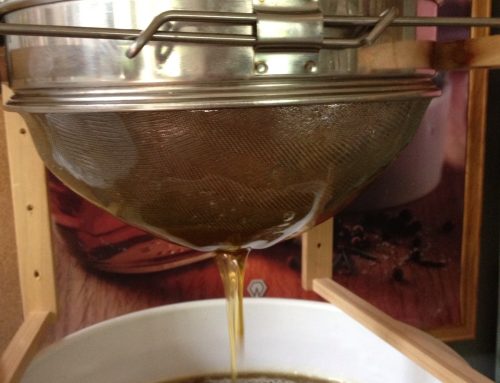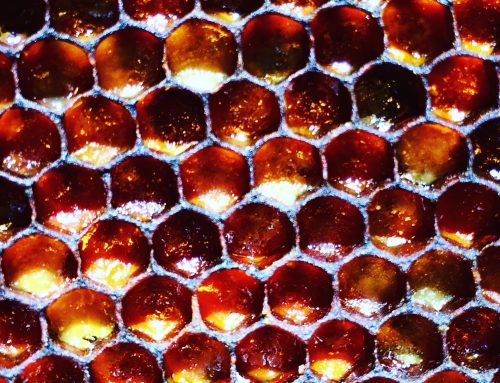Antibacterial Properties of Honey
- The high osmolarity of honey kills bacteria and fungi by drawing water from their cells, ultimately dehydrating them
- Honey is acidic, with a pH of about 4, which inhibits the growth of most bacteria
- Honey has the necessary components to produce minuscule amounts of hydrogen peroxide over a long period of time. This slow release makes honey an ideal substance to help in the treatment of small wounds and bacteria caused disorders.
- Floral nectar components also lend to the healing properties of honey. Flavonoids, which are beneficial substances produced by plants, are also found in honey and contribute to honey’s antibacterial properties.
Honey Cough Syrup
- 1 1/2 Tb zest of 2 lemons
- 1/4 cup peeled, sliced ginger, or 1/2 teaspoon ground ginger
- 1 cup water
- 1 cup honey
- 1/2 cup lemon juice
In a small saucepan, combine lemon zest, sliced ginger and one cup water. Bring mixture to a boil, simmer for 5 minutes, then strain through into heat-proof measuring cup. Rinse the saucepan and pour in one cup of honey. On low heat, warm honey, but do not allow it to boil. Add strained lemon ginger water and lemon juice. Stir until it forms a thick syrup. Pour into clean jar with lid. Can be refrigerated for up to 2 months
*Children ages 1 to 5, use 1/2 to 1 teaspoon every 2 hours. Ages 5 to 12, use 1 to 2 teaspoons every 2 hours. Ages 12 and older and adults, use 1 to 2 tablespoons every 4 hours.
Join our newsletter
Volutpat vel turpis nulla lorem sed semper. Aliquam sagittis sem libero viverra vehicula nullam ut nisl.



